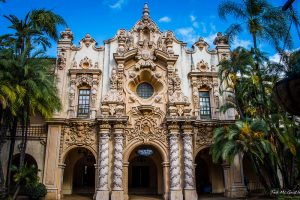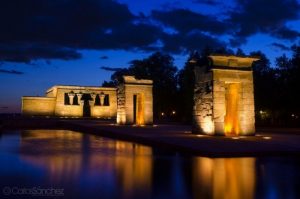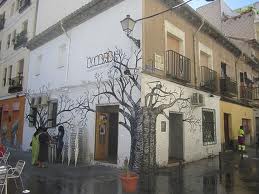Madrid is a lively, innovative city full of surprises, which is reflected in the life of its various neighborhoods. In this collection of articles in which we discuss the various neighborhoods of Madrid, today we want to focus on three very different neighborhoods, some well-known and others less so, each of which contribute their own idiosyncrasies to the identity of the city as a whole. Today in this article from ShMadrid we’ll be talking about the neighborhoods of Paseo del Arte, Princesa and Malasaña.
Related article: Where to Discover Family Friendly Neighborhoods in Madrid
Index
Paseo del Arte, emblem of the city’s culture
Culture is what most characterizes Paseo del Arte, keeping in mind that it is one of the neighborhoods in the world with the most Museums of International Importance per square meter. Over a distance of just two kilometers, you can find three of the best portrait art museums in Spain. The Prado Museum, whose origins date back to 1785 and became a portrait museum in 1819, is one of the best museums in the world for Spanish, Flemish and Italian art, where you can see works of such magnitude as Velázquez’s Las Meninas, El Jardín de las Delicias by El Bosco and Goya’s Las Pinturas Negras. Close by, we also find the Museo Nacional Thyssen Bornemisza, another cultural emblem with a private collection of unimaginable value, featuring paintings from the Middle Ages through the end of the 20th century, as well as an interesting collection of Impressionist art. Finally, we find the Reina Sofia Museum, inaugurated in 1990, which houses an exceptional collection of modern and contemporary art from the end of the 20th century to today. Dalí, Miró and Picasso, with his iconic work El Guernica, are the stars of the gallery.
Princesa, the tourist center of Madrid
Don’t go any further until you visit this other emblematic area of the Spanish capital. Let’s start on calle Princesa, one of the most famous avenues in Madrid, where the offering of leisure and restoration is limitless. The plazas España and Moncloa are other important areas in the capital that always ring with the symphony of passing pedestrians. Points of interest worth seeing in Princesa include Cuartel General del Ejército del Aire, el Faro de Moncloa, el Edificio España, the Torre de Madrid, the monument to Cervantes, the Jardín Botánico, the Templo de Debod and of course, the Palacio de la Moncloa.
Related article: The Neighborhoods of Madrid
Malasaña, Madrid’s trendy neighborhood
Malasaña has become a reference point of culture in Madrid, where the bohemian and trendy flock to enjoy and live in its avante-garde environment, something that makes it one of the most fashionable neighborhoods in the Spanish capital. Situated close to the center, the area is flanked by Gran Vía, Fuencarral, Carranza y San Bernardo. The name of Malasaña comes from the last name of a historical figure, a woman named Manuela Malasaña, who was regarded as a hero during the uprisings of 1808 against the French troops in Spain. As a result, the origin of the neighborhood has a bit of a subversive air, where a woman was turned into the icon of a conflict typically commandeered by men. The plaza del 2 de Mayo, or Plaza of May 2, representing the date of the uprising, has become the heart of the neighborhood, where you can see the arc of the old barracks located there, where the soldiers who participated in the uprising now rest. Malasaña was also one of the sites of the Movida Madrileña, or Madrid Movement, a counterculture movement that look place in the capital during the 80s.
*Main photo by Jim the Chin via VisualHunt
What do you like the most about each of these neighborhoods?








